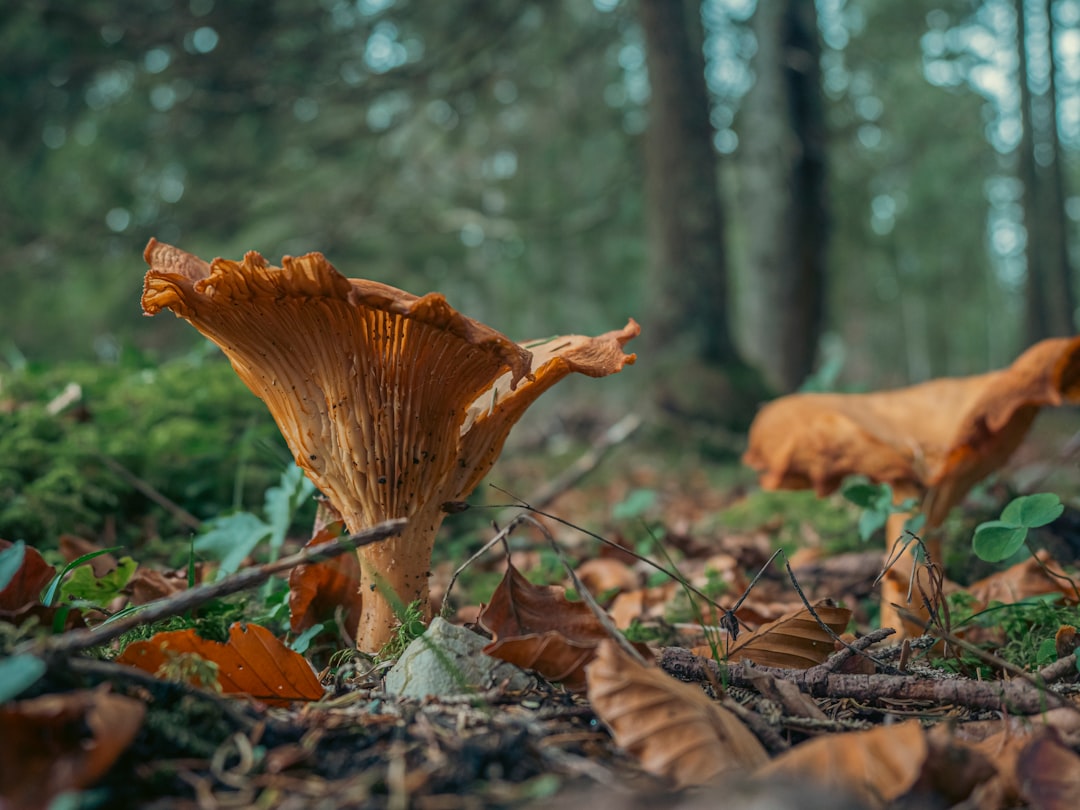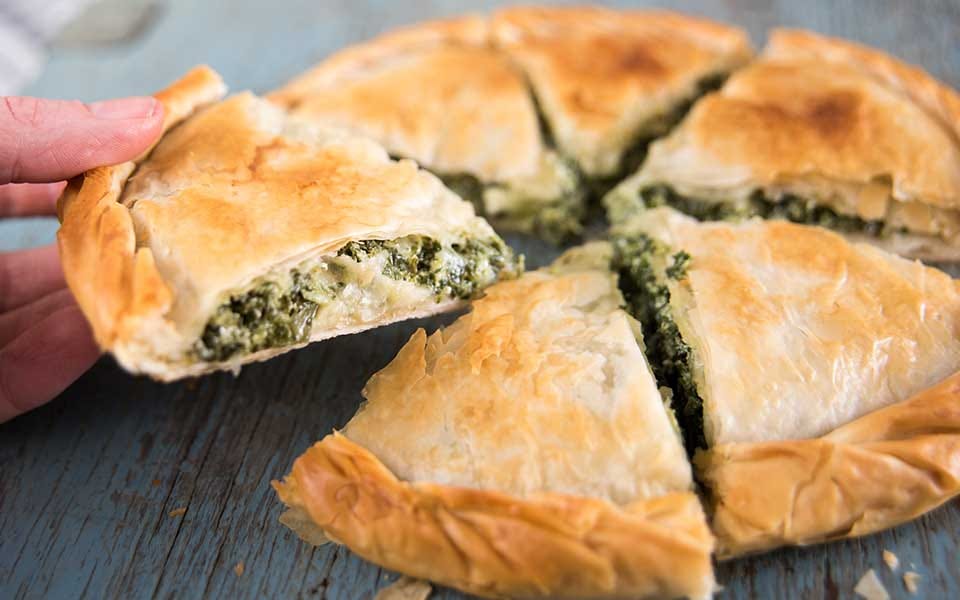Food for free, right there in your park
A recipe for Greek Horta pie
In my early twenties, anxious to escape the rut of a good, responsible job that had propelled me straight into middle age, I ran away to Greece. I decamped to a tiny village that had barely encountered a tourist, certainly not an English one. On the top left-hand side of the mainland under the range of mountains dividing Greece from Albania, it was not far from the river of Acheron (the Styx to the Romans) where Charon ferried souls from the present world to the next, as I had determined my flight would do, as it were.
I left the sensible life with my turntable, Pink Floyd and Big Bill Broonzy, a few kitchen tools and not nearly enough warm clothing. After the women of the village had come to the conclusion I wasn’t there to steal their husbands and sons, a suspicion which endured most of the long winter, they took pity on me. They had observed how carefully I eked out my savings, buying one onion at a time, the smallest bottle of green oil at the village press, no extravagant meat ever but sacks of cheap dried beans and lentils regularly. As spring began to scribble the grey-rubbled mountains with a fuzz of new green, they guided me with them in search of free food.
Roka - wild rocket - grew everywhere, so much more peppery than the polite arugula sold in US supermarkets. Wild oregano, pushing up through cracks in the arid soil, was an explosion of flavour when I cooked it slowly into butter beans, charmingly called yigandes - giants - in Greek, that cultivated oregano can’t begin to replicate. Equally beguilingly named, marathon is wild fennel, and chopped with other ingredients into a stuffing for vegetables or turned into pies.
The women showed me how to forage for young dandelion leaves and purslane to make bitter or tart salads, for roots, and earthy greens in the brassica family to turn into heartening soups dribbled with olive oil. Any number of edible greens were transformed into endless pies that push the formula far beyond the familiar spinach-based spanakopita.

Horta, as greens are collectively called in Greek, are the base-line for foragers. There are apparently over 300 wild edible greens and herbs in Greece, though curiously the women of my village viewed some of the obvious wild fruits with great suspicion and ignored them. I earned points revealing that blackberries stewed with sugar were the perfect partner to thick Greek yogurt, and rose hips could make a syrup and a jam.
Foraging is as old as hunting and fishing, which are just other words for foraging - but for animals, birds and fish. Even after Neolithic nomadic tribes began to settle and to domesticate plants and animals, people continued to harvest in the wild. But these days, we do so little of it beyond making on-trend jars of wild garlic pesto in the spring. Everyone is familiar enough with tales of hunting for mushrooms in literature to do it themselves where they can. But few will consider a spring walk to gather the young tips of nettles or dock, say, for soup.
Enthusiasm for growing food in allotments began to spread in the west in the 19th century, around the time botany publications also grew in popularity. With the recession in 2008 that followed the global financial crisis, the townspeople of Todmorden in Yorkshire got together to create vegetable gardens and orchards for each citizen to harvest from, free of charge on a self-service basis. The scheme grew into Incredible Edible, now with over 700 sites around the world.
Don’t these times seem ripe for foraging? You don’t have to live in the countryside to do it. Foraging can take place in urban settings, in parks, along towpaths, anywhere that is green.
Some provisos: if dogs are walked along the paths, take care where you pick, and wash your treasure well when you get home. Equally important, pick responsibly, taking only enough for personal consumption. Sea kale, once prolific, has almost been stripped away in some UK coastal locations, partly as a result of its popularity with the Victorians, who would dig it up to try and grow it in their gardens.

To avoid picking plants that could do you harm, buy a book with good photographs and bone up on them. Some varieties of black nightshade are edible but only their leaves. The rest of the plant makes strychnine. Look up the easy ones to find - bitter dock, amaranth, sorrel, wild chicory (Cichorium intybus), wild rocket, watercress, blue mallow, prickly golden fleece for a start…I could go on. They all will feed you well for free.
Taste what you pick to decide whether to treat the leaves raw as salad, turning them over with lemon juice, good olive oil and a crunch of sea salt, or whether they would be better cooked into a pie or a side dish.
This time of year, while what, let’s be honest, are weeds are still young and tender, is the time to go foraging for wild greens. Pretty much everything a good book endorses is delicious in a horta pie. You can make this one the Greek way with phyllo pastry but two sheets of regular short pastry will do just as well. Gather your neighbours together and promote the idea of community foraging and bulk buying with this pie that feeds 10 to 12.
1kg/2 lbs of mixed greens: spinach, young dandelions, wild chicory, endive, or other greens - or just cultivated spinach and kale
½ large bunch flat-leaf parsley, roughly chopped
½ bunch fresh dill, roughly chopped
bunch fresh chervil, roughly chopped
55g/2oz butter
1 large bunch spring onions/scallions, roughly chopped, green parts too
½ teaspoon each ground allspice, cinnamon, nutmeg
2 teaspoons sugar
salt and white pepper to taste
5 eggs, lightly beaten
1 cup feta cheese, crumbled
½-¾ cup milk
½ cup melted butter (optional)
12 sheets phyllo pastry or one sheet shortcrust pastry
On your clean countertop, sprinkle the greens with salt, leave to absorb 10 minutes then squeeze well to drain off any liquid. Add them to a mixing bowl with the fresh herbs and mix all together well.
Melt the butter over medium low heat in a large frying pan. Add the chopped spring onions/scallions and sauté until the white parts are translucent. Add the greens, spices, sugar and salt and pepper to taste, remembering the feta to come will be salty.
Cover and simmer 20 minutes or until all the liquid has evaporated then take off the heat and return the greens to the mixing bowl and leave to cool.
To the bowl, add the eggs, feta, and enough milk to create a sauce that will just cover the greens when they’re spread into the pastry shell and mix together well.
Preheat the oven to 175C/350F.
Layer 6 sheets of phyllo inside a roasting pan or large circular pie tin, brushing each layer with melted butter, allowing them to overhang the rim of the pan. Spread over the greens then cover with the remaining phyllo in the same manner. Roll the bottom and top edges over each other to close the pie. Brush the top with a little more melted butter or olive oil, lightly score into serving pieces and bake 50 minutes or until golden. If using shortcrust pastry, roll out one sheet to fit the bottom and up the sides of the roasting pan and a smaller sheet to act as the lid then proceed as for the phyllo pie.






A friend in Puglia was so transfixed by her he made a pilgrimage to all her haunts. As for your Greek adventure Mamma Mia had nothing on you!
Foraging is Mother Nature's treasure hunt. Your essay brought to mind the brilliant British-born forager queen, Patience Gray, whose book _Honey From a Weed_ I am sure you are familiar with. Foraging for wild edibles changes, depending on where you are. You were wise to learn from the local women in Greece, as Gray did in Greece, Spain, and Italy. I have gone on foraging walks with experts in Southern California, when I lived in Los Angeles, and in theVirginia Piedmont, when I lived in DC. I don't do as much foraging in Maine, because my arthritic spine and prosthetic knees discourage bending and kneeling. But I have a large jar of dried black trumpet mushrooms from the huge wild 'shroom harvest two seasons ago. As a possibly interesting side note, my British son-in-law's mother grew up playing with Patience Gray's children, because her father--my son-in-law's grandfather--the well-known graphics designer F. H. K Henrion, employed Patience Gray as his executive assistant and she lived across the road from him. Gray mentioned him in her book as one of her primary design mentors.